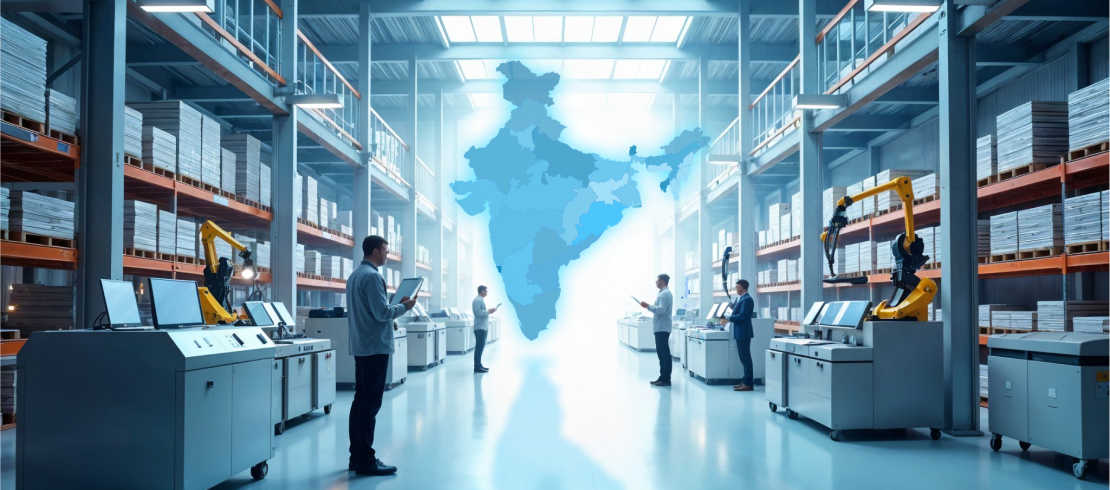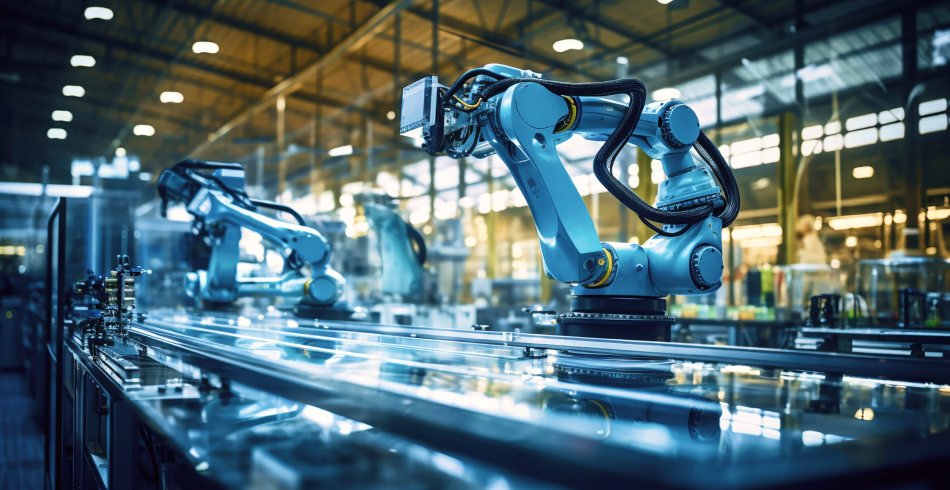What India Needs to Become A Manufacturing Hub

Merging Automation with Workforce Empowerment
India stands at a crossroads in its quest to become a global manufacturing powerhouse. On one hand, technology is already reshaping shop floors—from Tata Steel engineers remotely controlling agglomeration plants in Jamshedpur via LED screens, to pilots of AI, Gen AI, and machine-learning solutions that smooth out workforce variability and boost productivity. While making technology work for business, India is learning to marry automation with empathy, upskilling workers rather than displacing them.
Stagnant Growth Amid Structural Challenges
Yet despite two decades of policy reforms—from Make in India to PLI schemes, GST, and streamlined clearances—manufacturing’s share of GDP has stubbornly hovered around 15%, global output contribution remains below 3%, and employment under 12%. Structural challenges—land-use distortions that inflate costs, lopsided infrastructure investment skewed toward urban services, and an industrial base fragmented across small enterprises—continue to hold the country’s growth back. With a youthful demographic dividend, rising domestic demand, and “China + 1” supply-chain shifts on its side, India must now pair its hard-won digital shop-floor advances with deeper infrastructure upgrades, land-policy reform, and targeted support for both megacity hubs and emerging tier-2 markets if it is to claim its place as the world’s next manufacturing hub.
Let’s take a look at what the industry leaders have deemed to be the essential factors to meeting the demands of next-generation manufacturing and realising India’s vision of raising its share of global manufacturing from under 3% to 5% by 2030.
1. World-Class Infrastructure
India’s logistics performance index (LPI) ranks 38th globally, highlighting persistent bottlenecks in road, rail, and port connectivity. Upgraded highways under Bharatmala Pariyojana and dedicated freight corridors are steps forward, but faster execution and last-mile connectivity remain critical. For instance, container dwell time at major ports has fallen to three days—outperforming the USA and Germany—but further highway-rail integration is needed to sustain momentum.
Industry stakeholders at the post-Budget 2025 summit praised the government’s National Manufacturing Mission and PLI enhancements but stressed the need for ready-to-move industrial zones with power, water, and environmental clearances pre-arranged. According to Jaideep Ghosh, mega investments in infrastructure cushion economic cycles, but plug-and-play parks will drive faster project starts.
Nine Indian ports now rank among the world’s top 100. However, cargo handling capacity must double by 2030 to accommodate growing trade volumes. Enhanced hinterland rail linkages to inland container depots (ICDs) and airport cargo clusters will reduce logistics costs—currently at 13% of GDP—toward the global average of 8%.

2. Regulatory Modernisation
India’s complex land acquisition and non-agricultural (NA) conversion processes delay projects by an average of 18 months. Industry experts urge single-window clearances and uniform State Logistics Policies to expedite approvals. A Reuters analysis notes that easing NA land conversion and labour laws could increase India’s manufacturing share to 10% by 2047.
The post-Budget 2025 dialogue highlighted positive reforms—lower corporate tax rates for new manufacturing units and extended tax holidays—but called for a harmonized labour code that balances worker protections with flexible hiring. “Aligning labour regulations with global best practices will be key to attracting large-scale investments,” commented an Economic Times panel on electronics sector PLI.
While India rose to 63rd in the World Bank’s Doing Business index, procedural hurdles persist at sub-national levels. Adopting e-governance, real-time dashboards for approval tracking, and outcome-based regulations—similar to Gujarat’s digital logistics portals—can reduce approval timelines from 90 days to under 30.
3. Strategic Technology Adoption
Global leaders in 3PL and Warehousing have demonstrated that IoT-enabled buildings can cut energy costs by up to 20% and maintenance downtime by 30%. In India, however, only 40% of logistics firms plan to deploy sensor-based systems, and most sites remain at low automation maturity levels. Expanding 5G coverage, subsidising IoT pilots, and creating industry consortia can accelerate adoption.
Budget 2025 earmarked funds for AI Centres of Excellence and vocational training, but private-public partnerships must scale rapidly to upskill 100 million workers for advanced manufacturing roles by 2030. Increased R&D incentives—expanding the PLI scheme to cover emerging sectors like semiconductors—will boost domestic innovation.
Creating “smart corridors” that link factories, logistics parks, and ports via real-time data platforms can optimise workflows and reduce idle capacity. Solar and EV charging incentives stand as catalysts for greening manufacturing, emphasising integrated digital-renewable infrastructure.
The Way Forward
India is at a pivotal juncture. While initiatives like ‘Make in India’ have laid the groundwork, the manufacturing sector’s marginal GDP growth underscores the need for a more nuanced approach that addresses structural challenges such as land-use distortions, infrastructure disparities, and a fragmented industrial base.
To unlock the sector’s full potential, India must focus on comprehensive reforms that streamline regulations, enhance infrastructure in both urban and rural areas, and foster innovation through increased R&D investment. Moreover, aligning industrialisation with spatial development by investing in secondary cities and rural regions can create new growth engines and job opportunities.
The path forward involves not only policy reforms but also a cultural shift towards embracing technology and upskilling the workforce. By doing so, India can transform its manufacturing landscape, making it more resilient, inclusive, and globally competitive. The goal is clear: to build a manufacturing sector that not only contributes significantly to GDP but also provides sustainable employment and drives economic growth for decades to come.